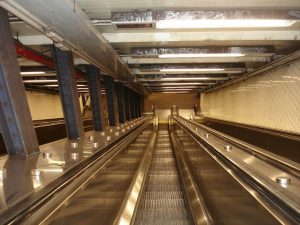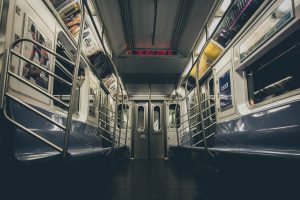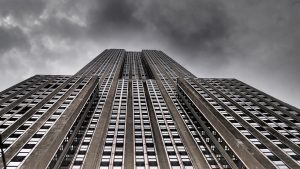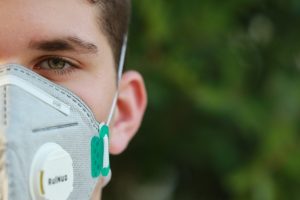In this video, Richard Carranza –Chancellor of the NYC Department of Education – talks on ‘Closing Bell’ chat show about how schools in NYC will possibly look when they open this fall.
New York and Phase 2

Last week New York entered Phase 2 of its coronavirus economy re-entrance program. During this phase, approximately 150,000-300,000 New Yorkers started going back to their office jobs. Mayoral approval was given to restaurants meeting the special COVID-19 requirements, so that they could use sidewalks or curbside parking spaces for outdoor dining.
Social distancing rules must be followed and face masks properly worn when within six feet of other people. Sidewalks, patios, backyards can be used. In two days’ from now (beginning of July) additional seating will be permitted in open streets and tables in pedestrian plazas can be used (private arrangement made between business owners).
It is hoped that these measures will keep 5,000 restaurants open and ensure 4,500 people do not lose their jobs.
New Yorkers Getting Mobile Again

In the first phase of the coronavirus re-entrance to work, it has been estimated that approximately 825,000 commuters will start using public transportation. That makes up approximately 15% of the total amount of regular commuters pre-COVID-19. The people who work in construction, manufacturing and retail industries are the ones who are first going to use the public transportation service. Phase 2 will probably up the number to around 2,000,000 (which is anticipated to be the beginning of next month) and then 3,000,000 by Phase 3 (by which time it is hoped that eateries open up).
Given these plans, the MTA has been working hard to put strategies in place to protect the health of the public. The wearing of masks will be required and additional service will be put in place to make it effective.
According to New York City Transit Interim President Sarah Feinberg:
“If you are going to reopen and you’re going to tell people to come back to work, you have to provide transportation for them…[with the mandated 6 meters’ distance between riders]…that means you can only serve a small percentage of your riders.”
As such, the MTA has put out a request to public transport users who are not traveling for necessity to avoid using the trains during peak times. Regular weekday bus service will return to normal in Brooklyn, the Bronx, Queens and Staten Island. In Manhattan 75 percent of regular service will be resumed.
The Return of the New Yorkers

How can people return to work and commute when it is so hard to monitor social distancing on public transportation? That is what is happening in New York as many thousands returned to the subway following the lifting of COVID-19 restrictions in the region.
While the Metropolitan Transit Authority is working around the clock to ensure safety on trains, consumers are still very concerned of coronavirus being spread while they commute to their jobs.
Fears include: lack of mask-wearing, lack of social distancing (as the subways are traditionally very crowded), etc. – all issues that have been problematic in slowing the spread of the virus. Having said that there will be law enforcers in the form of transit workers telling them to wear them as well as NYPD workers enforcing the law.
July 8th is when New York City will start Phase One of its economic re-opening, rendering it the last region in New York State to take this on.
Additional Small Business Relief Plans
The businesses that were not ultimately eligible for the COVID-19 relief programs offered by federal governments until now, should now apply for the New York Forward Loan Fund.
This regional state program – valued at $100 million – is geared for the small businesses owned by minority groups and women. These businesses will have up to 20 full-time workers. In addition, property owners with up to 200 rented units who have not been paid during this time will be eligible for assistance from the program.
While the Payroll Protection Program (PPP) was a nice gesture it has come under substantial attack for being unrealistic. Loans have to be paid back within five years. Given that unemployment figures jumped to 14.5% in New York last month, there are many individuals who need the money without having the stress of paying it back.
Post Covid-19: Will NY Workers Return to Offices?

Since many executives have been forced to work from home and it has been pretty successful, there is now talk of the likelihood of many of them not returning en masse to the buildings. Three large corporations: Barclays, JP Morgan Chase and Morgan Stanley seem to be adopting this policy in Manhattan according to research firm Nielsen. What this will ultimately settle into is that of its approximately 3,000 members of staff, they will return to the office here and there but no longer full-time.
Such a move will substantially reduce the city’s carbon footprint, ease public transportation but at the same time result in a decrease in trade for local eateries and other commercial trade.
In addition, Twitter is following suit. Last week, Jack Dorsey, the company’s CEO told his entire staff that they could carry on working from home “forever.” However, the doors will remain open for those who would like to return to the familiar office structure; he will leave the decision with them. And, in those cases, the office regulations and guidelines will apply so that working from the office will take on a completely different feel. The process will be “careful, intentional…and gradual.”
This new work from home policy will hugely benefit people in all cities and mean that relocation will be less common.
Celebrating US Workers and Small Businesses
In this Fox news video, at the White House President Trump “celebrates American workers and small businesses” and how the country will re-open so that they can be in “good shape.” He talks about how the Paycheck Protection Program (PPP) has been successful and how it has brought much fiscal relief during this difficult time.
Re-Opening of New York’s Economy
The economy has been shut down for around six weeks now due to the extremely contagious COVID-19. But Governor Cuomo is in the process of implementing a plan to re-open the economy on a regional level. Easing restrictions will be undertaken based on data taking into consideration the number of hospitalizations, confirmed cases of the virus and other related factors.
Cuomo pointed how regions look very different even within the state, specifically mentioning the divergences between New York City, Central New York and North Country. Other areas will be monitored by governors there such as Lt. Gov. Kathy Hochul (Western New York and Buffalo) and Lt. Gov. Bob Duffy (Rochester and Finger Lakes).
In addition, New York State is increasing testing to health care workers, essential employees and first responders. The goal is to reach 40,000 people each day. In addition, in the near future independent pharmacies should be able to conduct diagnostic testing resulting in a network of 5,000+ pharmacies with this capacity.
It is likely that many measures will gradually be put in place to get the economy going again but that it will take a long time. Some examples include: staggered schedules at work; less people per square footage of office space and temperature taking before entering the building. Those who can work from home may continue to do so at least for the foreseeable future.
New York Advisors and Coronavirus Crisis Management

Over the last few weeks, individuals, families and companies have found themselves in unprecedented situations as a result of the COVID-19 epidemic. Consequently service providers in all industries are seeking out new ways to help their clients.
In this article local fiscal advisor Michelle Smith Source Financial talks about what she has seen and how she is responding to her clients. We also look at a group in the educational and artistic industry and their experience.
CEO of Source Financial Advisors Michelle Smith explained that she has been dealing with the shame some of her clients are encountering. She said:
“Ten percent of my client base legitimately realized their risk appetite is not what they thought it was. I am counseling those people not to be ashamed of that. Just because you cannot tolerate volatility to this degree is nothing to be ashamed of. Half of my clients are also ‘newer’ investors as they are divorced women who are newly in control of their money so this is the first crash they have experienced. In fact, the opposite is true. Your money should not keep you up at a night. If it is, something is wrong and needs to be corrected. This health crisis combined with the economic avalanche shortly behind it hit people’s primal fears of dying alone without money. I am meeting all clients ‘where they are’ and not throwing a bunch of historical data at them to convince them otherwise.”
A few weeks ago, a group of scientists, musicians and comedians performed a show called, “Asians Strike Back: A Coronavirus Comedy and Science Show,” expressing their attempt to help the public through both education and humor. This is their attempt to “fight back” against COVID-19 .
When there is so much uncertainty in the world, experts in all fields often have something to offer. Be it financial planning, laughter or just listening, they are all valid approaches.
Summer Youth Jobs

At the beginning of the COVID-19 crisis in New York, the summer youth job program was canceled. Now however, some lawmakers in the region are asking for it to be re-instated. According to Justin Brannan, a member of the city council:
“Budget cuts will be an unfortunate reality this year, but when we’re talking about 75,000 youth and their families who will lose this opportunity, we need to get creative and figure it out. I think a public-private partnership here would make a lot of sense.”
President of Partnership for NYC Kathryn Wylde, pointed out that it was not likely the large amount of individuals hoping for job placements in the summer would be getting them. This will not happen until the economic recovery from COVID-19 is much more in place. While there are some potential virtual internships, many jobs have to be done in-house. And, given the other challenges that New York is encountering, it is unlikely the summer youth job placements will become top priority.